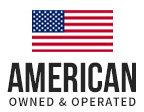Posted by Arti Sh on October 28, 2013
Preparedness is important, and a survival kit is just a means of preparation. You’ll find a lot of pre-packaged survival kits available on the market, but there’s something to be said for piecing together your own survival kit. For one, you’re able to choose the specific brand or type of item you’re putting into your kit. For another, you can help control the quality of the items you may be relying on, as well as control the cost of what’s going into your kit. Over the next few blog post, we’ll talk about some things you need to build your own survival kit that will get you well on your way to self-reliance.
SURVIVAL KIT PACK
First and foremost, you’ll need something to act as a carrier for your survival kit. Ideally, your pack will be two things: water resistant, and easy to carry around. As far as water resistance goes, look for something coated in nylon that can seal up completely in case you happen to go for a swim. In terms of size, you’ll need something that will still fit everything you’re carrying with you, but will give you quick access to whatever you might need. Remember, too, that the weight of your survival kit should allow you to throw it over your shoulder and hike with it.
SURVIVAL KNIFE
A good survival knife can be your best friend when you’re out in the wilderness alone. From cutting cord or branches to skinning and cleaning your dinner, a knife is a must for any survival kit. Folding knives are good ideas to save space, but a standard knife can be worn on a belt for easier access. Survival knives primarily come in two distinct metals: carbon steel and stainless steel. Each metal has its own perks, but carbon steel is known for holding an edge longer and handling shock well. When you’re in the wilderness, you want your knife to stay sharp as long as possible.
CORDAGE
Cordage simply means different types of string, and there may be no better tool for you to have in the wild with you than a good length of cord. Cordage will help you set box traps and snares, help you fish, tie down your shelter, and a host of other things. Paracord is an immensely popular cord, known originally for being used as suspension lines in parachutes in WWII. The most common type of paracord has a minimum breaking strength of 550 pounds. One hundred feet of paracord doesn’t take up much space in your pack, and is easily affordable. Make sure you have plenty of it in your survival kit.
If you’re building your survival kit over time, these items are three must-haves, and should probably come first. To keep researching what should be in your survival kit, have a look at the other three posts in our “building a survival kit” series. [Continue Reading Part 2]





← Older Post Newer Post →